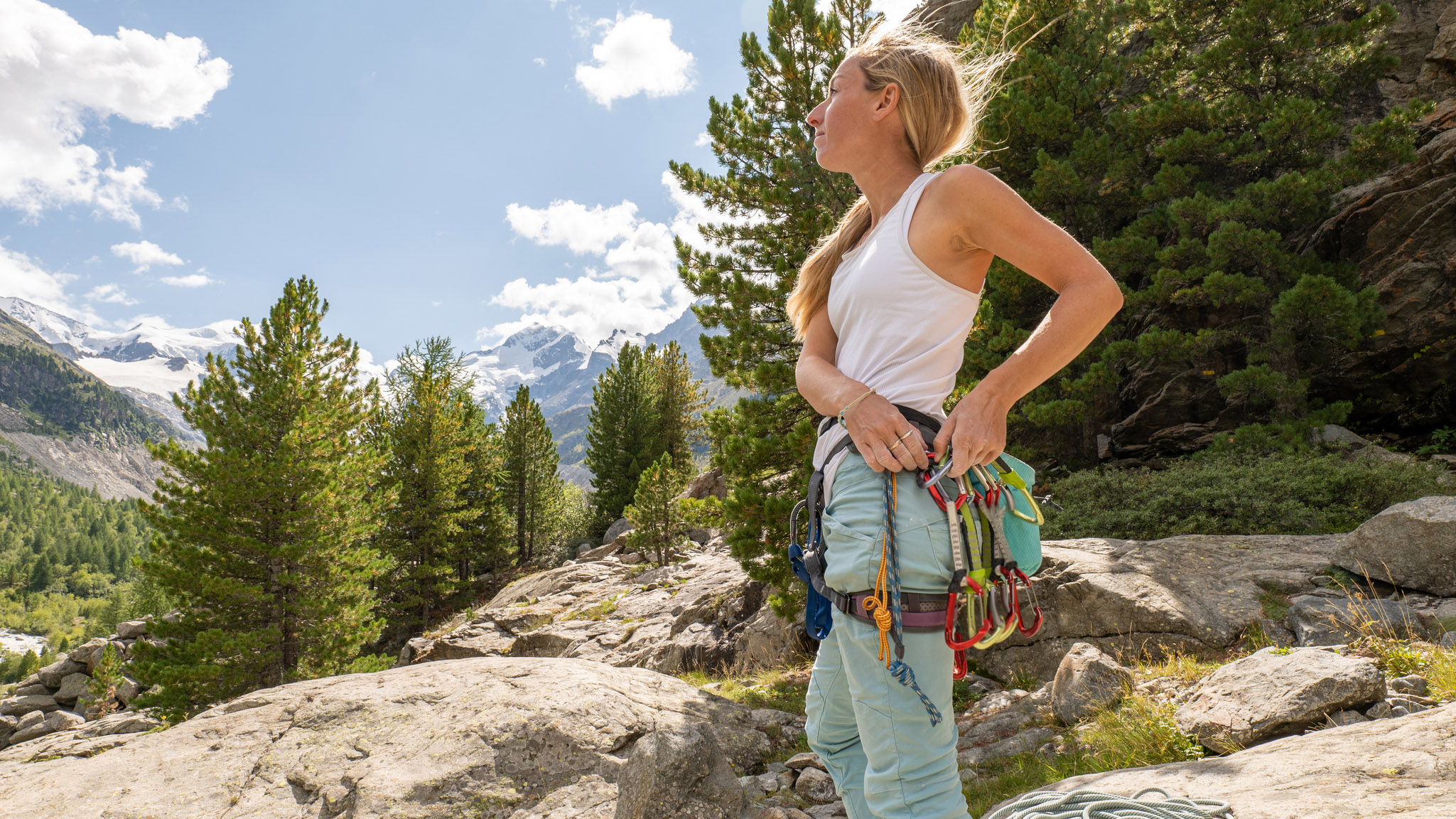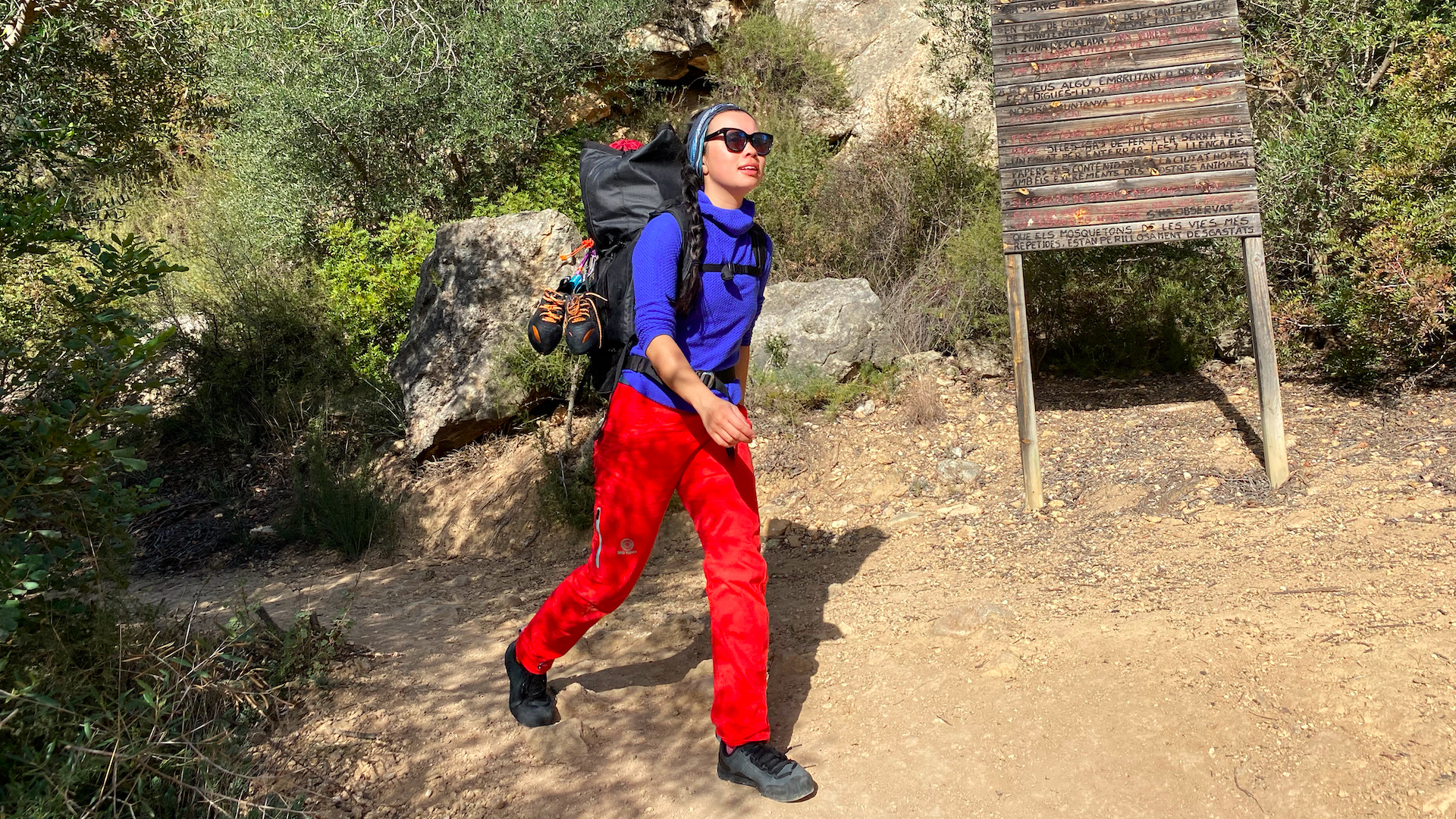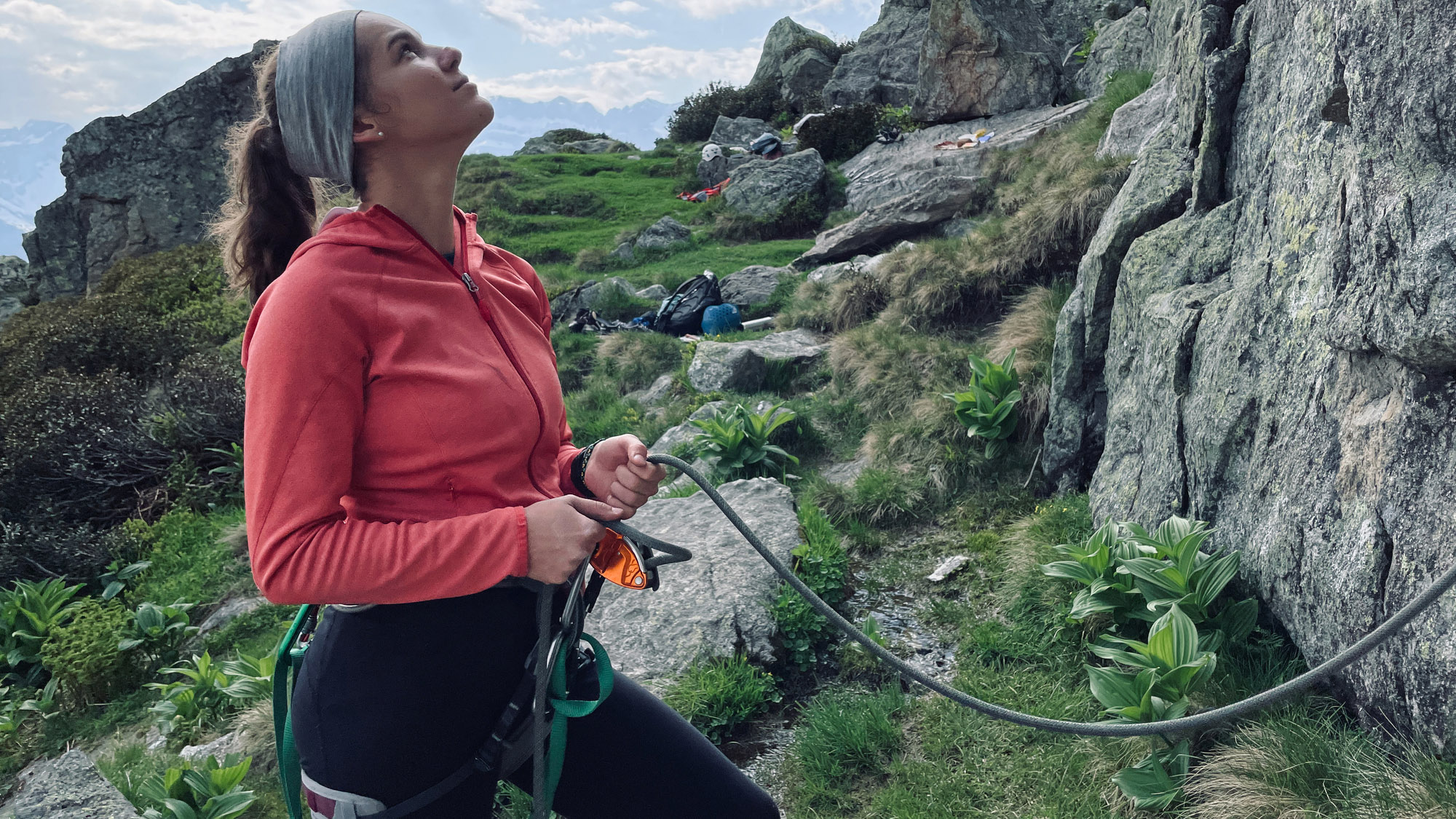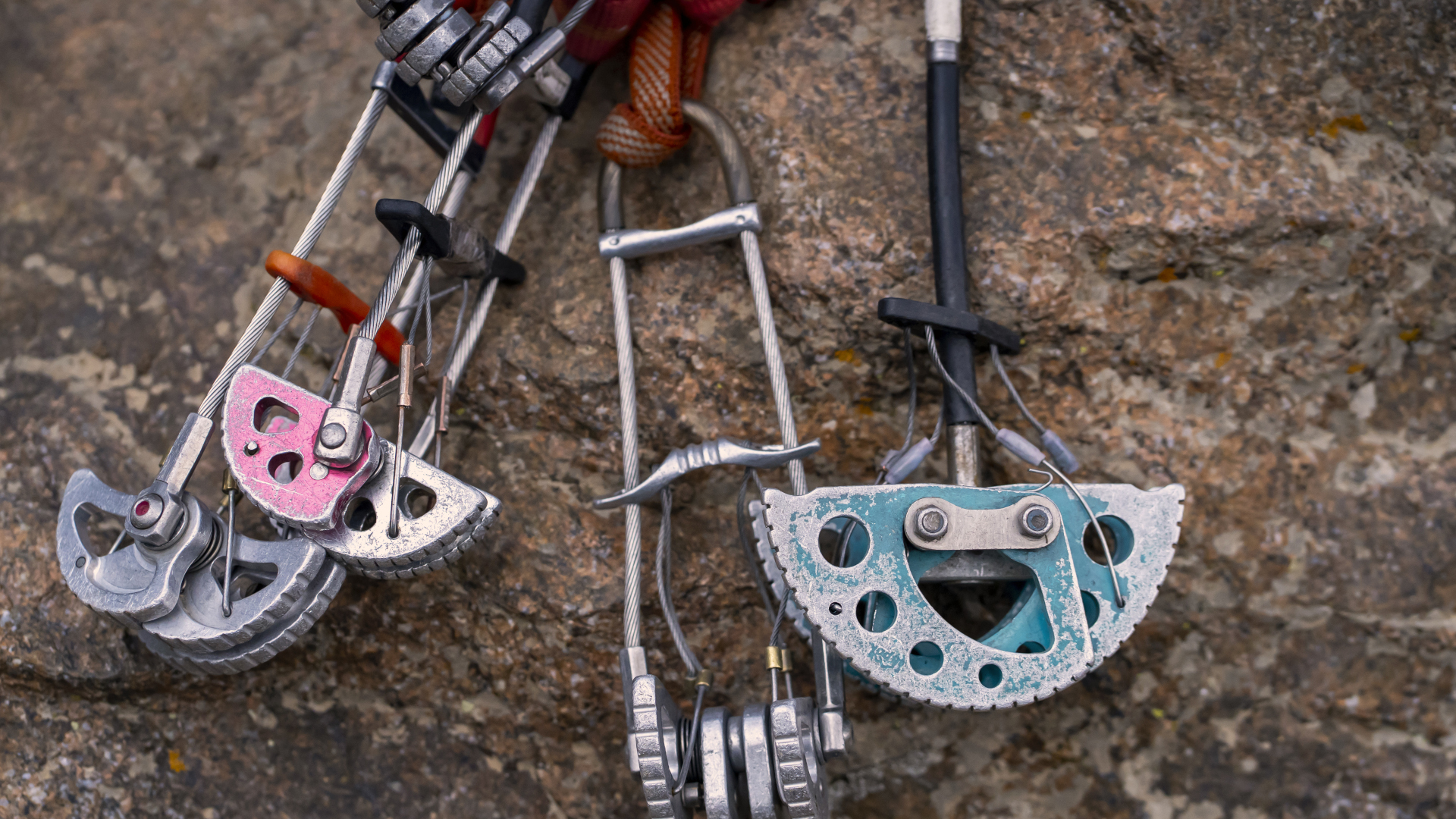
Much like hiking, rock climbing and eco-consciousness go hand-in-hand. If you love climbing outdoors, you’ll be aware of the impact humans are having on the natural world and you’ll be passionate about protecting natural spaces. When you get so much enjoyment from nature, it’s important to be a steward of the outdoors and inspire others to protect it.
Becoming a more eco-friendly rock climber can take all different shapes and forms. You could look at your lifestyle choices and go vegan and keep a daily sustainability checklist like Alex Honnold or you might be looking for smaller ways to make a difference when it comes to getting to the crag and actually climbing. Read on for 11 ideas for how to be a more sustainable rock climber and care for our crags with your actions as well as your heart.
1. Change how you travel
If you’re going to the crag regularly, one of the biggest ways to cut down on your carbon footprint is obviously to reduce how much gas you’re burning to get there. Hopefully if you’re driving, you’re already carpooling with your climbing partner but make sure groups take as few cars as possible and look into other ways to do your favorite climbing spot, such as riding your bike or using public transport.
2. Stick to the path
This is basically eco hiking 101, but if you have to don your approach shoes to get to the wall, don’t cut switchbacks. Because you’re probably not there for the hike, and the approach is just a means to an end, you might be tempted to take a short cut to save your legs and get on belay faster, but doing so can increase soil erosion. Stick to the trail and if no official trail exists, follow the footsteps of those who have come before you.

3. Resole your climbing shoes
Thinning rubber, a stretched out shape and broken fastenings are all signs you need to replace your climbing shoes, but did you know that you might be able to resole your climbing shoes rather than completely replacing them? Climbing shoes can often be resoled before the last becomes visible, which is a cheaper and more eco-friendly option, and some makes can even be resoled several times. Search for climbing shops that resole shoes in your area before ditching your old pair.
4. Shop sustainably
All things considered, climbing is a gear-intensive sport and the gear we use takes a serious beating. Whether you’re ready to replace your shoes for better grip or need to replace your climbing harness for safety, always follow a few golden rules to keep your footprint down:
- When you have to buy new, shop from eco-conscious climbing brands like Edelrid, La Sportiva, Patagonia, Five Ten and Vaude.
- Take your time choosing gear to buy once and buy well.
- Care for your climbing gear to increase its lifespan.

5. No landscaping
When you’re establishing a new climbing route, you’re more likely to discover shrubbery and grass on the rock, since humans haven’t been here yet to disturb it, and it can be tempting to do a bit of gardening. Don’t. Removing plant life from a crag because it’s getting in the way of your climbing isn’t a good example of leaving no trace. Those plants are alive, the rock is their home and you are a guest. Avoid removing or trampling plants and disrupting ecosystems.
6. Pack out your trash
If you’re reading this article, it seems as though you’d already be conscious of not littering at the crag, yet it remains quite remarkable how much rubbish and gear gets left behind. If you’re eating snacks that come in plastic wrappers, be vigilant about packing it away before you start climbing again so it doesn’t blow away, and give the base a once over before you leave to make sure that you haven’t left anything behind. In fact, if someone else has littered, pack that out too, would you?

7. Check your chalk
Your climbing chalk is another element of climbing that leaves a trace on the environment and can even disturb the ecosystem. Consider climbing without chalk, using liquid chalk instead of powder, or wiping off as much chalk as you can when you’re finished.
8. Respect wildlife
In addition to plants, there may be animals that live and nest in the rock you call a climbing route. At certain times of year, you may not be able to climb in some areas due to nesting birds and bats. Though these closures may not be strictly policed, it’s important to respect them and let wildlife do its thing.
No matter what time of year it is, avoid pulling out the bluetooth speaker and putting on some tunes, as this also disturbs surrounding wildlife more than necessary.

9. Get your own coffee mug
It’s no secret that climbers love coffee, which is why indoor climbing gyms usually have the best java around, but if you’re in the habit of picking up a latte at your local coffee shop before every climb and using their disposable cups, there’s definitely a more sustainable and economical approach. Get yourself a great camping mug and either have them fill it at the coffee shop (they usually give a small discount for this) or brew your own coffee at home and bring a flask full to save on money, too.
10. Use removable gear
Trad climbing was born out of the idea that placing bolts in the rock is antithetical to the principles of leave no trace, and climbers like Warren Harding in Yosemite really pushed the idea. Sport climbing, where permanent bolts are attached to the rock, may be fun and more accessible, but it’s controversial – so much so that the National Parks Service and the US Forest Service are proposing a ban on anchors on federal land. Whether existing routes will be removed remains to be seen, but going forward, it’s best to avoid leaving permanent gear in new routes and learning how to embrace those cams and nuts.

11. Adopt a crag
Just like adopt-a-highway and adopt-a-trail, you can organize your very own adopt-a-crag and organize a cleanup at your favorite spot. Head to the Access Fund’s website to register your event at least three weeks in advance. While you’re there, consider getting involved with their work by volunteering, fundraising and educating yourself on their mission of sustainable access and conservation of the climbing environment.







